As dusk sets, anyone who stops by the research wing of the forest department in Uttarakhand’s Haldwani looking for IFS officer Sanjeev Chaturvedi, won’t find him there. Instead, the officer can be found promenading through the centre’s campus which teems with abundant flowering plants and fruit trees. The sight of a glorious green carpet thriving at a height of 300 ft above sea level is baffling.
How many species of flora do you think reside within this 25-acre land? Take a guess.
“Over 850 species and counting,” reveals Chaturvedi. In this forest-like ecosystem that he has spent the last few years cultivating, bamboo and cactus befriend each other, while crickets, butterflies and insects stop by to pay their respects to the honeysuckle. The air is crisp and the walk is therapeutic for Chaturvedi, who pauses to put his experience into words; then proceeds to say that they won’t do justice.
Who is most taken aback by Chaturvedi’s optimistic view are the naysayers who were convinced that this particular posting in the highlands of Uttarakhand would be a test of the IFS officer’s patience. Their discouragement, and the fact that most of Chaturvedi’s predecessors had detested being in charge of the god-forsaken area, made the officer sceptical.
The harsh terrain, coupled with the remoteness of the place, did nothing to ease his woes.
But in the nine years since he assumed the role of conservator of forest research (Chaturvedi was promoted to head of the wing in 2020), this terrain evolved into a blessing. As Chaturvedi and his team discovered, not only was it a favourable home for Nainital’s ‘miracle plant’ Patwa, but also a host of other plant species that are in the IUCN (International Union for Conservation of Nature) red list and classified as ‘threatened’ by Uttarakhand board.
The team has been working closely to conserve plant habitats and protect them from illegal trade. They are also innovating ways to grow them in their natural habitats and in their research centres as well. The goal is to scale these plant populations at their original sites.

While today, Chaturvedi’s work in this domain is being applauded, in 2015, his path looked very different. That same year, The Better India highlighted the officer’s scope of work in the field of anti-corruption. Impressive and courageous though the operations were, they resulted in chargesheets, suspension orders, low gradings in Annual Performance Reports (APAR), dismissals and frequent transfers.
The objective was always the same: to halt Chaturvedi’s crackdown on corruption.
But with a firm belief in the fact that “for true democracy to prevail, adhering by the rule of law was the way forward”, Chaturvedi never backed down. And in 2015 he was awarded the prestigious Ramon Magsaysay Award for emergent leadership.
A leader then and now, the Uttar Pradesh native has prided himself on displaying integrity even in the most sticky spots. Early on, he resolved never to see transfers as a punishment. “Every transfer is part of your career and as a servant of your nation, it is your duty to do it with utmost commitment and professionalism,” he had said five years ago.
Today, not only has he stayed true to those words, but has found purpose in his work here in the Haldwani area.
Blazing a trail in conservation
As head of the research wing of the forest department which focuses on the conservation of threatened plant species, the 50-year-old officer is at the helm of biodiversity protection.
“This is crucial in this area. Uttarakhand has over 43 types of different forests and three major agro-climate zones: tropical, temperate and alpine. The altitude of the place ranges from 300 m up to the 6,800 m high Nanda Devi Peak. As you can see, the flora here experiences a very diverse climate.”
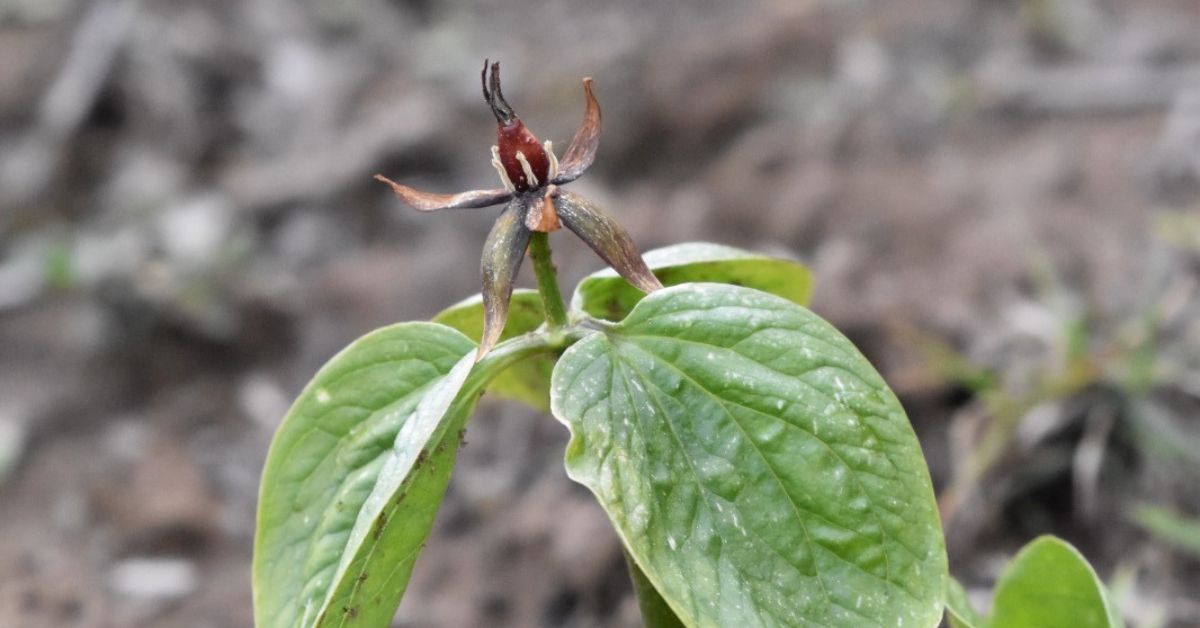
The unique geography of the region has promoted the growth of endemic plant species (species which are found in a particular geographical area and not anywhere else in the world). “By nature, these plant species that thrive here are classified as ‘threatened’ or ‘critically endangered’ because of the specific habitat they require,” Chaturvedi explains.
The scope of his work includes identifying these ‘endangered’ plant species and then charting out a survival guide for them.
While the conservation of the Patwa plant has brought Chaturvedi’s work to the fore, he emphasises that it is one of the many plant species his team is working on. “Each of them has unique medicinal properties and is found on challenging terrain.”
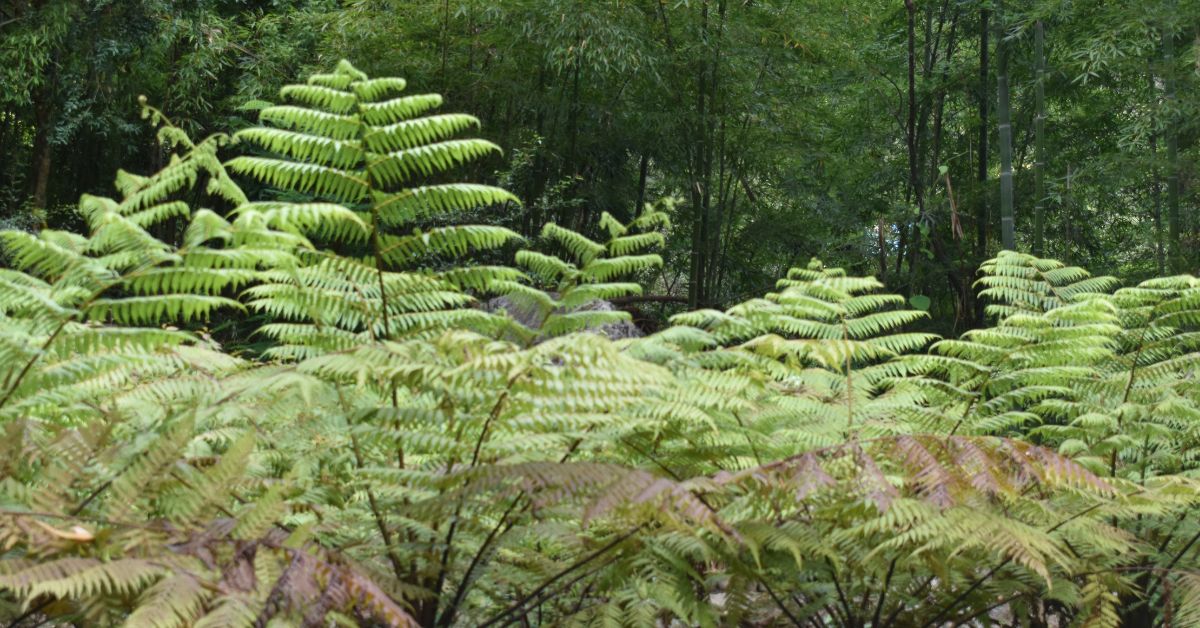
And while the job is tough, Chaturvedi has a stellar team backing him. One of his junior research fellows and “brilliant minds”, Manoj Singh, shares the intricate process they follow to conserve these plant species.
“We identify the plants based on their family and genus, then proceed to collect their specimens.”
However, some factors play spoilsport to this — illegal trade, growth of invasive species, and wildlife feasting on the fallen fruits and seeds. “When the birds eat these seeds and fruits, it disturbs the natural regeneration of the plant. There is no chance of a new crop.”
Singh and Chaturvedi lead the team to collect these fruits and seeds and take them back to the centre where they conduct experiments to cultivate these plants through vegetative propagation.
“The terrain, weather and climate are challenging,” Singh points out. “Especially when, after restoration, we proceed to rehabilitate the plants back in their natural environments. While these altitudes are conducive for their growth, it is a tough terrain for us to access.”
Chaturvedi adds that they zero in on the plant species after thorough research through Vedic literature as well as the IUCN lists. Once they demarcate the areas where the plants thrive — taking care not to publicise it too much — they take the GPS coordinates of the place and in the months that follow, conduct studies on the plants.
One of the plant species conserved is the Himalayan Gentian (Gentiana Kurroo), a striking blue-coloured flower, that has highly medicinal roots.
“This is why it has been subjected to excessive over-exploitation and is on the verge of extinction,” says Chaturvedi, adding that the plant’s ability to treat liver problems makes it a target of trade. “Due to the efforts of the Research Wing of the Uttarakhand Forest Department, approximately 600 Himalayan Gentian specimens have been successfully conserved across three different regions in the state.”
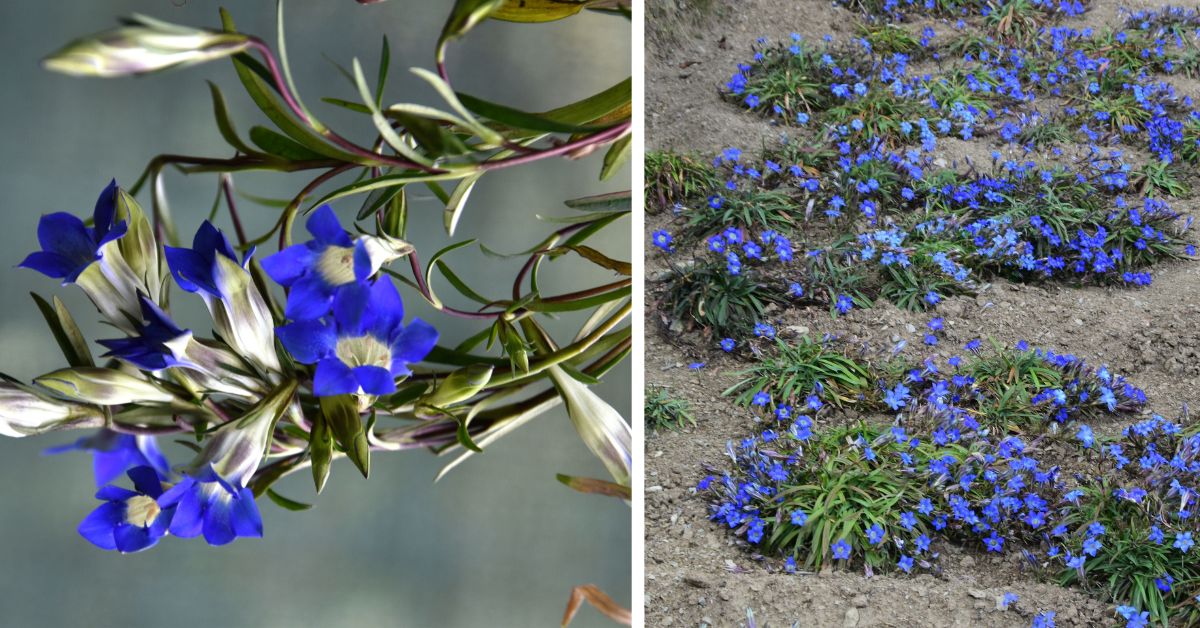
The Atis (Aconitum heterophyllum) is another high-value medicinal herb endemic to the Himalayan region, whose roots have the power to treat various ailments such as fever, malarial fever, cough, cold, colic, and headache. Another sought-after plant is the Golden Himalayan Spike (Eremostachys superba), whose root is given to lactating cattle to boost the production of milk.
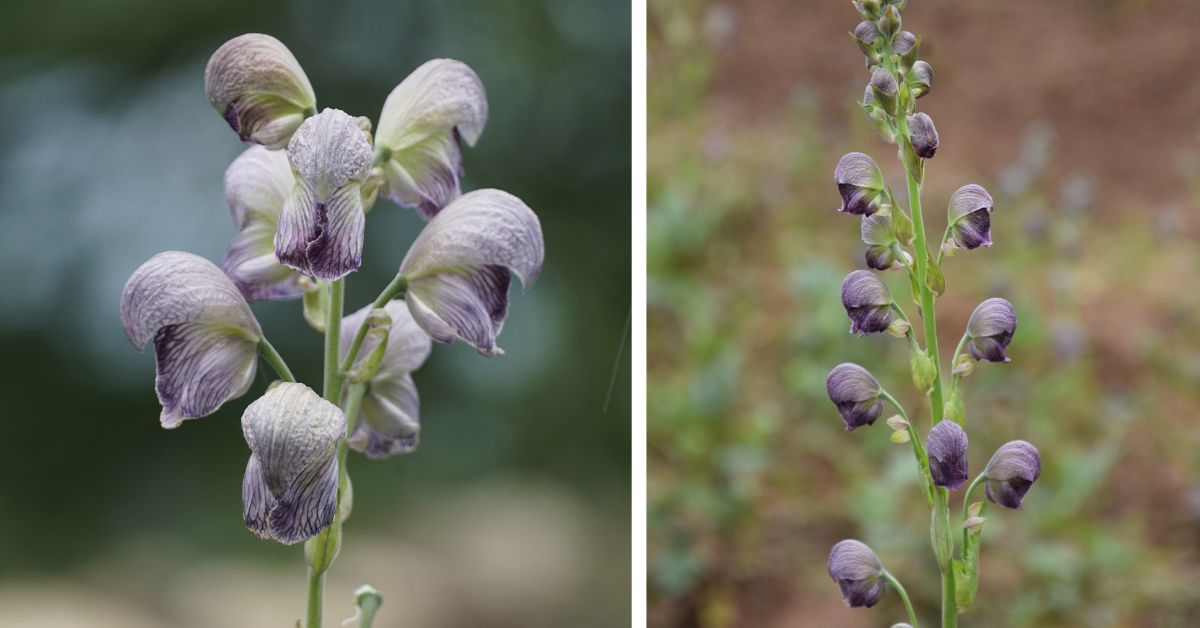
“One of the most prized plant species is the Jatamansi (Nardostachys jatamansi). It has valerenic acid and valerinone which make it an excellent source of the drug valerian, a top-selling herbal supplement. The rhizome and the oil extracted from it are used in the perfumery and cosmetic industry,” Chaturvedi explains.
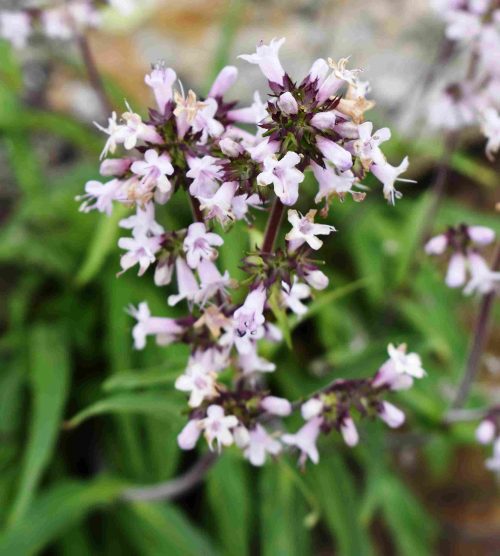
Some of the other plant species under the purview of the forest department are Lilium Polyphyllum whose tubers are abundant in steroids; Mitha Vish (Aconitum balfourii) whose dried tubers are used in the treatment of rheumatism, fever, gastric disorders, swelling and sciatica; Naagchatri (Trillium govanianum) whose roots contain potent steroids; Tamil palm (Trachycarpus takil) which is one of the few palm species that survives in frost and snow; Tree Fern which is said to be a living fossil as it has recorded geological and environmental changes since ancient times and was a primary food source for dinosaurs due to the starch content of its stems.
Along with this, there’s also Tumri (Pittosporum eriocarpum) which is used as fuelwood; Van Satuva (Paris polyphylla) whose rhizomes are anthelmintic, antispasmodic, antimicrobial and anti-inflammatory and of course, Patwa.

A miracle in the forest
The Meizotropis pellita plant traces a route through the narrow stretches of the Nainital and Champawat districts and is concentrated at the hillock ‘Patwadanger’ from which it derives its name.
Chaturvedi adds, “In 2012-2013, a small demonstration plot of 0.50 hectares was established in the Sariyatal nursery, where 500 saplings developed from seeds were planted. Currently, approximately 490 plants survive in this area, with a survival percentage of 98 percent.”
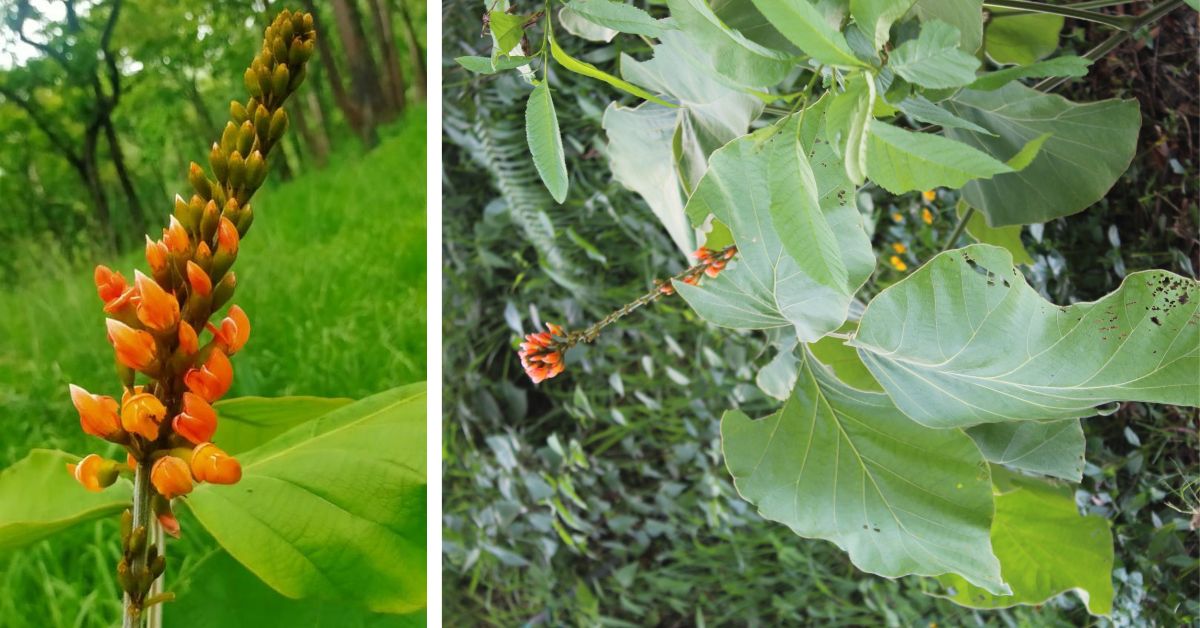

The plant within itself holds great possibility due to the soil binding properties of the root system, a characteristic that could prove useful in minimising soil runoff from hill slopes. Add to this the antioxidant properties possessed by the plant’s roots, stems and leaves, and it is a golden foliage. “Currently, there are 800 Patwa plants that are thriving,” Chaturvedi notes.
Illegal trade has been the biggest contributing factor to the slow death of this miracle plant. Highlighting the problem, Chaturvedi says, the plant habitats bordering Tibet and Nepal lead to a surge in cases. But even as he adds that cracking down on these cases lies beyond his jurisdiction, he is reminded of a childhood anecdote.
“If you want to shorten an existing line, just draw a bigger line next to it.”
To this end, Chaturvedi learnt early on that the only way to ensure that the plant species of Uttarakhand thrived despite all odds was to ensure their propagation was amped up. “Since day one, we have made it our motto that if there are 100 plants in the initial habitat, we will grow 500 in our centres.” Currently, 2,200 endemic plant species are being conserved across the forest wing’s seven centres.
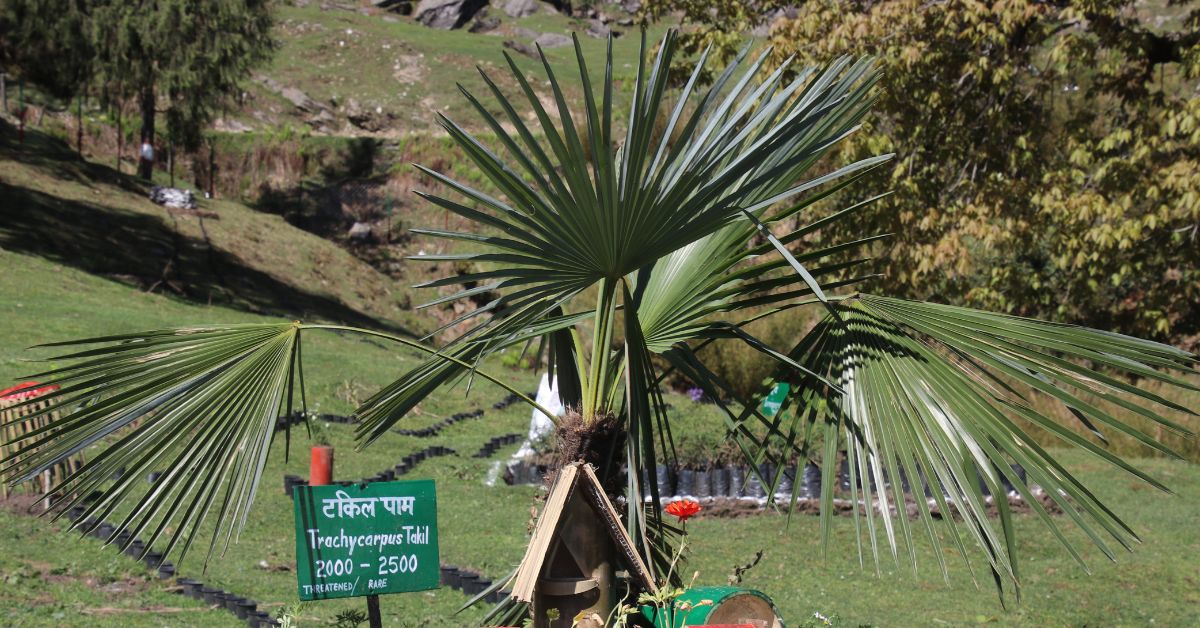
Through his term in the forests of Uttarakhand, Chaturvedi has also been instrumental in developing India’s first moss garden in Nainital which boasts around 90 different types of moss species, an open-air fernery in Ranikhet with 200 different types of ferns and a grass conservatory in Ranikhet with more than 100 grass species.
“We always underestimate the importance of grasses, but the latest research shows them to be more effective in carbon sequestration than trees because they store carbon in their roots instead of releasing it into the atmosphere.”
But Chaturvedi shies away from accepting applause. In fact, he says, if there is anyone that deserves the praise it is Mother Nature. “I have huge respect for her. She has designed each and everything in such a connected manner; every moss, every lichen, every insect, every pollinator. They are all so beautifully interconnected with each other that if you take out even one string, the entire chain will be disturbed.”
Edited by Padmashree Pande.
No comments:
Post a Comment